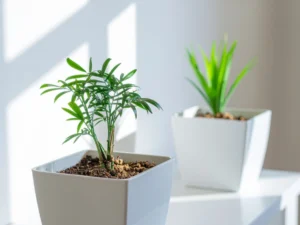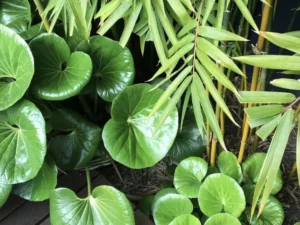When it comes to caring for indoor plants, many enthusiasts wonder, “Can peace lily survive in cold weather?” Peace lilies are beloved for their beautiful foliage and elegant white blooms. However, their sensitivity to temperature can pose challenges for those living in colder climates. In this article, we will explore the ideal conditions for peace lilies, their response to cold weather, and how to keep them thriving throughout the seasons.
Understanding the Peace Lily
Peace lilies (Spathiphyllum) are not true lilies but are part of the Araceae family. They are native to tropical regions, where they enjoy warm, humid environments. These plants thrive in low to medium light, making them perfect for indoor settings. However, their tropical origins mean they are not equipped to handle cold temperatures.
Ideal Growing Conditions
For optimal growth, peace lilies prefer:
- Temperature: Between 65°F and 85°F (18°C to 29°C).
- Humidity: High humidity levels, ideally above 50%.
- Light: Indirect sunlight, as direct exposure can scorch their leaves.
Maintaining these conditions is crucial for keeping your peace lily healthy and vibrant.
The Effects of Cold Weather on Peace Lilies
Temperature Sensitivity
Peace lilies are sensitive to temperature changes. When exposed to cold weather, especially below 50°F (10°C), they can experience stress. Prolonged exposure can lead to significant damage or even death. Cold temperatures can cause:
- Wilting Leaves: A common sign of stress, wilting can occur when the plant struggles to maintain moisture.
- Leaf Discoloration: Yellowing or browning leaves often indicate distress, potentially from cold shock.
- Stunted Growth: Lower temperatures can slow down the plant’s metabolism, leading to reduced growth.
Symptoms of Cold Damage
If your peace lily is exposed to cold weather, look for these symptoms:
- Drooping Leaves: When the leaves start to droop, it may be a sign that the plant is too cold.
- Brown Tips: Browning on the leaf edges can indicate cold stress.
- Mold Growth: Cold and damp conditions can encourage mold, which can further harm your plant.
Protecting Your Peace Lily in Cold Weather
Indoor Care
To keep your peace lily thriving during colder months, consider these care tips:
- Maintain Temperature: Keep your home temperature consistent. Avoid placing the plant near drafty windows or doors. Ideally, maintain a temperature above 65°F (18°C).
- Humidity Levels: Use a humidifier to maintain adequate humidity levels, especially during winter when indoor air tends to be drier. Alternatively, you can place the pot on a tray filled with water and pebbles to increase humidity.
- Light Requirements: Ensure your peace lily receives adequate indirect light. If natural light is limited, consider using grow lights to supplement.
Outdoor Considerations
If you have a peace lily that is kept outdoors during warmer months, it’s essential to bring it indoors before temperatures drop. Monitor the forecast, and as soon as nighttime temperatures fall below 50°F (10°C), relocate your plant to a warmer environment.
Seasonal Transition
Gradually acclimate your peace lily to its new indoor environment. When bringing it inside, avoid placing it directly in a colder room. Instead, allow it to adjust to the indoor temperature in a slightly warmer area before relocating it to its final spot.
What to Do if Your Peace Lily Gets Cold
If you notice signs of cold damage, here are steps you can take:
- Assess the Damage: Check for wilting, discoloration, or any other symptoms. Trim any severely damaged leaves to encourage new growth.
- Provide Warmth: Move the plant to a warmer spot, ideally away from cold drafts.
- Watering Adjustments: Cold weather can affect the plant’s water needs. Allow the top inch of soil to dry out before watering to prevent root rot.
- Reassess Location: If your peace lily continues to show signs of stress, consider a new location with better light and warmth.
Conclusion
In conclusion, peace lilies are not equipped to survive in cold weather. They thrive in warm, humid environments, making them ill-suited for temperatures below 50°F (10°C). If you live in a colder climate, understanding their needs and taking preventive measures is crucial for their health.
By maintaining a consistent temperature, ensuring adequate humidity, and providing proper light, you can keep your peace lily flourishing even during the winter months. If your plant shows signs of cold stress, quick action can help mitigate damage and encourage recovery.
Final Tips for Peace Lily Care
- Regular Monitoring: Check your peace lily regularly for signs of stress.
- Proper Potting: Use well-draining soil and pots to prevent root issues.
- Seasonal Fertilization: Feed your peace lily with a balanced fertilizer during the growing season to encourage healthy growth.
With the right care and attention, your peace lily can continue to brighten your home with its stunning foliage and blooms, regardless of the weather outside. By protecting your plant from the cold and meeting its specific needs, you’ll ensure it remains a vibrant part of your indoor garden.


















